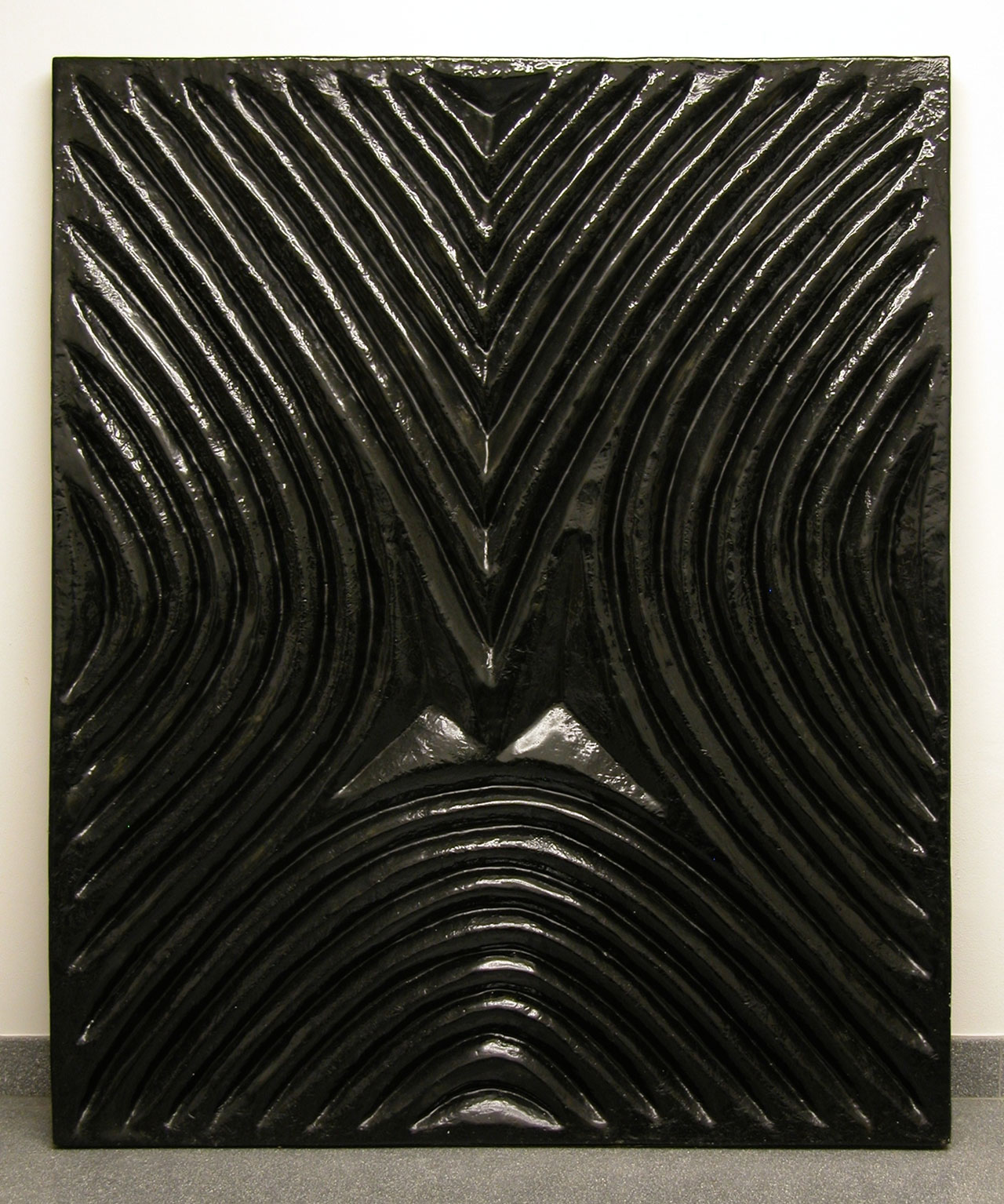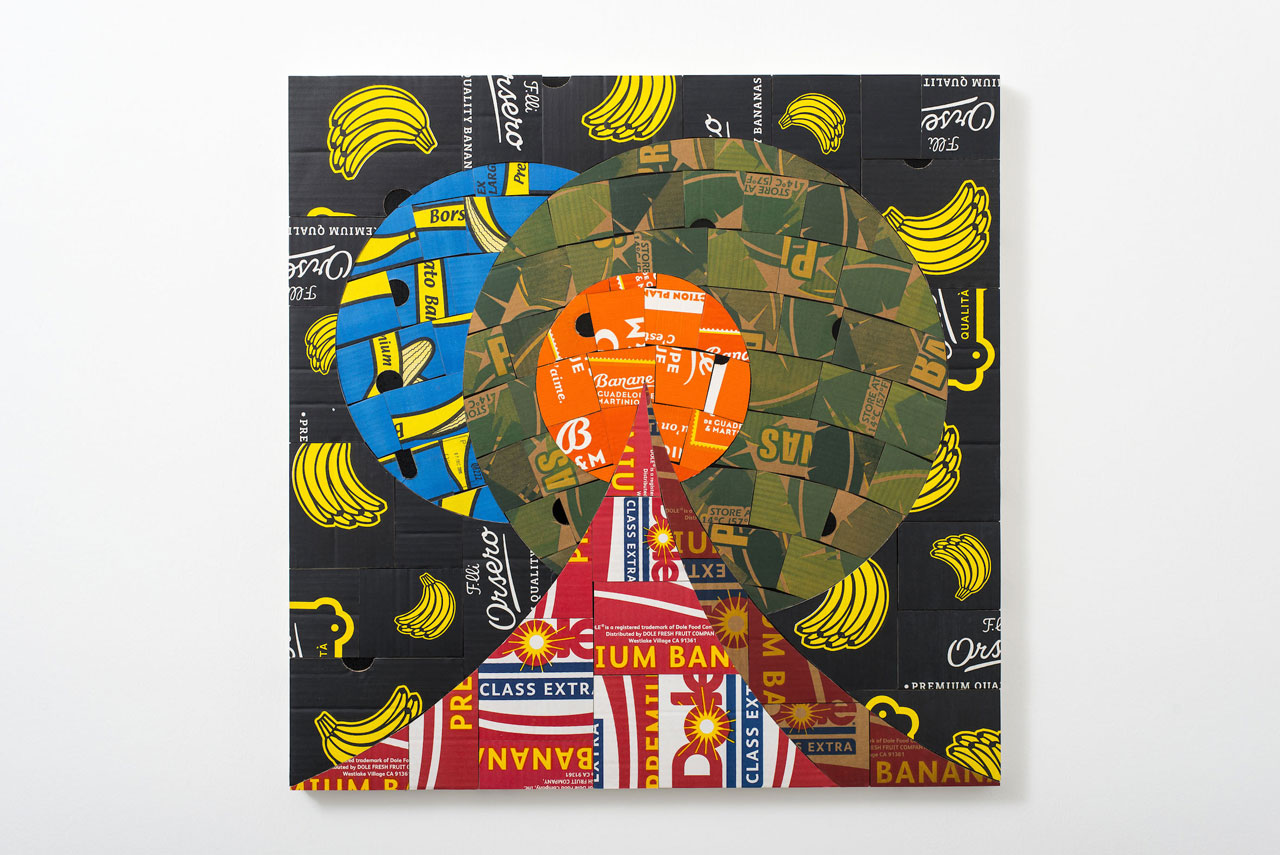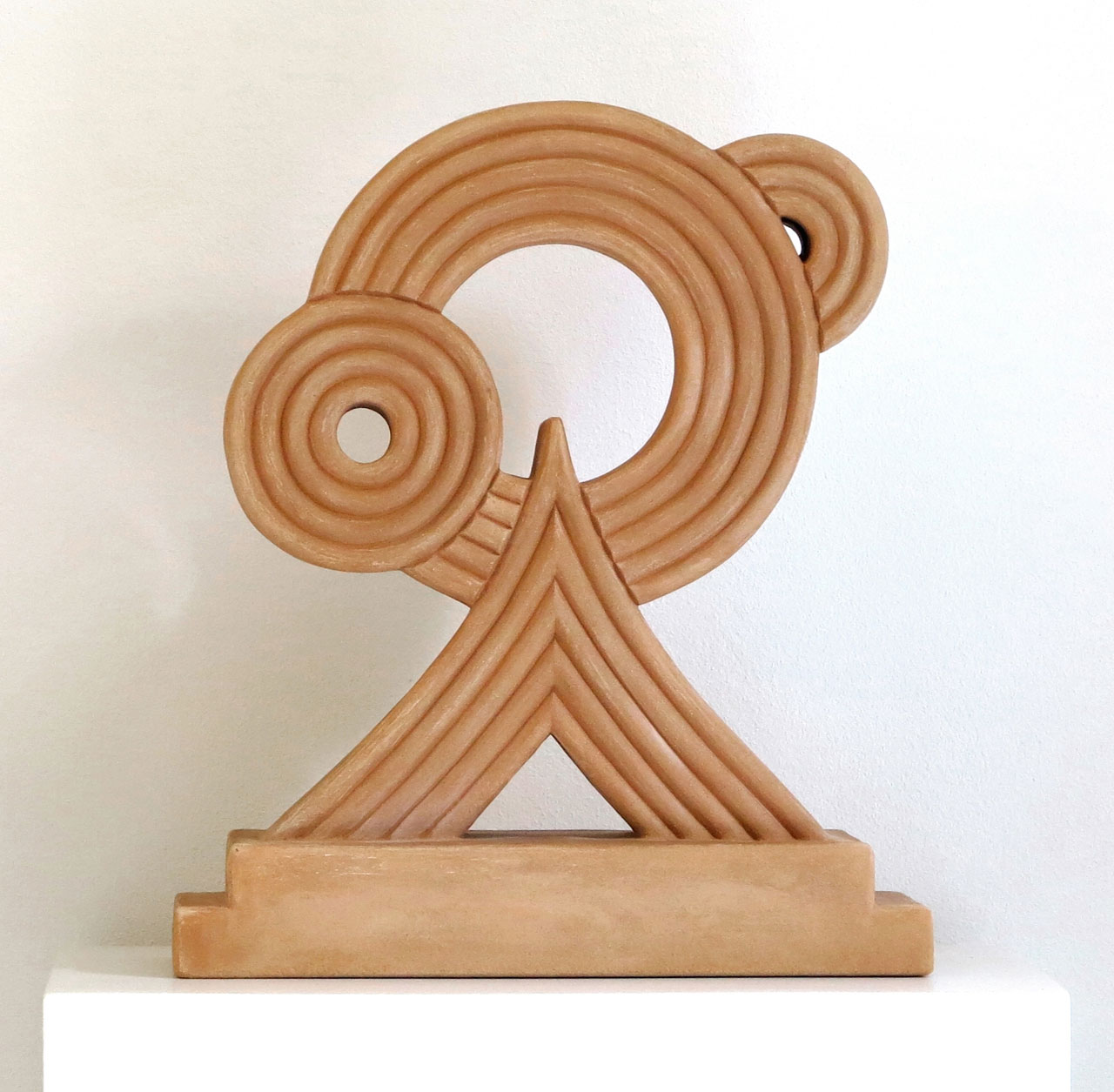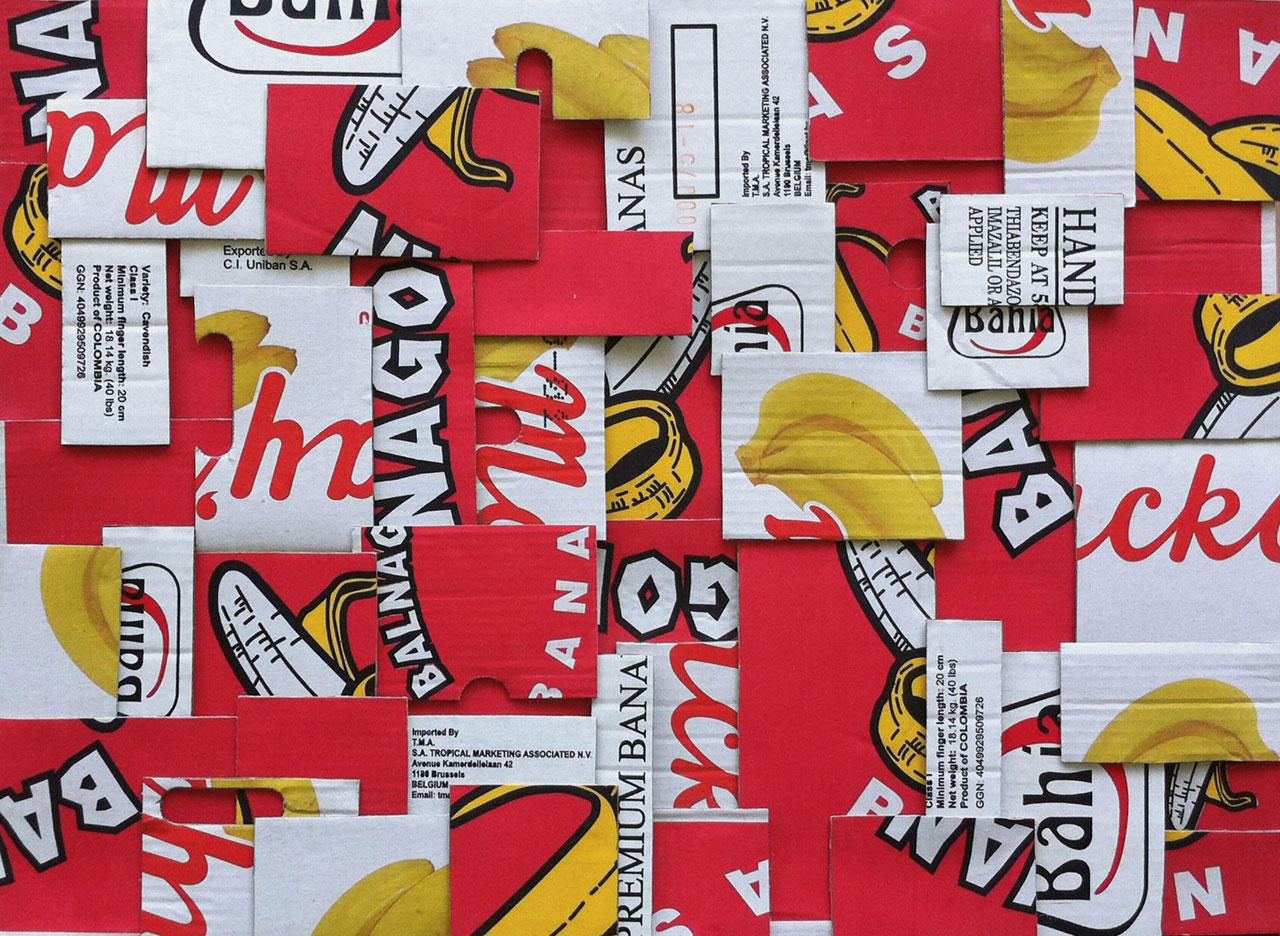Diaspora and migration in the work of British artist Jebila Okongwu – studio visit
African culture is an immediately recognizable feature in the work of Rome-based English artist Jebila Okongwu (London, 1975). His studio hosts mainly sculptures and large scale collages – though the artist has also approached video production and performance -, all of them inspired by bright colorful Nigerian textiles, and motifs and patterns of traditional votive statues. Okongwu’s research is more than just a revamped contemporary version of his native cultural origin. The use of banana cardboard boxes transformed into collage compositions alongside the quasi-optical paintings stemming from the repetition of curves and lines decorating Ibo carving, claim to a deeper engagement in the topics of migration, diaspora and post-colonialism.
What is your name?
Jebila Okongwu.
Where do you work?
Rome and wherever else I happen to find myself.
What is your work about?
My artistic practice is evolving from an ‘exotic’ identity that has been inspired by traditional Nigerian Ibo carving. I’m interested in migrational flows (Italy is the epicenter for European migration), the imbalance of global wealth, post-colonial trade and the exploitation of labour and natural resources. Apart from these social, political and cultural issues I’m also interested in the metaphysical realm. African traditions have many dimensions to reality: legends, myths, ancestors, spirits and the natural world. My most recent works are landscapes depicting psychedelic views of the cosmos.
How would you briefly describe the exhibition you are participating in at the moment?
It is a group exhibition called “The Go-Between” curated by Eugenio Viola at the Museo di Capodimonte in Naples. It consists of a selection of works from the Ernesto Esposito collection.
Is there a technique/material you prefer and/or use more often, and why?
I often work with cardboard from used banana boxes found at food markets and fruit shops. During the process of making the works, the graphic logos and texts of the packaging are broken up and reassembled to form patterns which recall African wax print fabrics. On a much deeper level, the banana boxes which have been shipped to the West across the oceans from Africa, The Caribbean and South America, also signify the barbaric passage of slaves and refer to the shadowy past of colonial trade.
Is there a work you wish you never did?
Absolutely not. Every work that I have ever made, and especially the failures, have brought me to the place I am today. Constant experimentation produces a lot of failures. And the simple process of elimination – not making these mistakes again, has been crucial in helping me to find my direction.
What would you like the audience to take from your work?
I allow the reading of my work to be as open as possible. Art is about communication – the varied personal associations which inevitably happen in each viewer’s head are all equally as important and equally legitimate as readings. I use diverse visual languages and create various levels of accessibility to achieve this.






